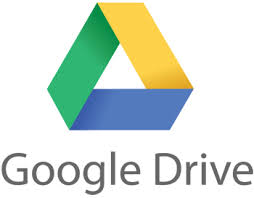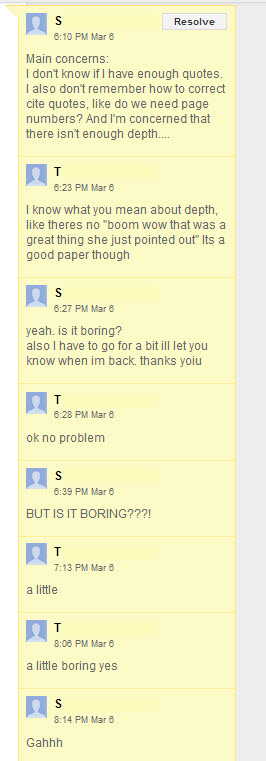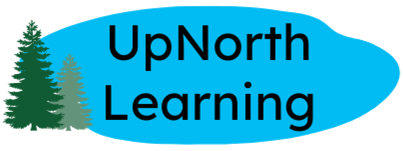
Image by Anasuarezrivero (Own work) [CC-BY-SA-3.0], via Wikimedia Commons
This is the second in a series of posts about the impact of a paperless approach on the writing process and product.
In the first post in this series, I talked about using technology to improve my feedback to high school students. My earliest experiment involved using my smart phone and using an iPad app called Explain Everything to provide audiovisual feedback for students. My paperless classroom, though, has evolved quickly, and this year, we went Google.
The Writing Conference 3.0
Last summer, I had the good fortune to be a part of the Chippewa River Writing Project (CRWP) Summer Institute, which further transformed my writing instruction and clarified my reasons for going paperless. As a writer in the institute, I saw how director Troy Hicks used the National Writing Project’s peer response model with Google documents to enhance feedback, and I hoped it would do the same for my students. The NWP model, based on Peter Elbow’s work, involves a fishbowl technique that begins with a writer asking the team to focus on and assist with specific issues in the writing. Then the writer reads the work aloud while the team listens and takes notes. After the reading, the team discusses the writing while the writer has his or her turn to listen and take notes. Even without technology, this response model, with its purpose-driven listening and audience reaction, is powerful for writers. In the fall, my students and I had the opportunity to pilot laptops which meant we could combine the Google Drive comment feature with the NWP peer response model. That is when my students took a leap forward toward becoming authentic writers.
My students took to the comment tool immediately and began using it with real intention. I was pleased with their progress as the year went on, but it wasn’t until March that I realized the true impact of the NWP model and the Google tools. Due to our snow days and the state testing window in March, my seniors were left to complete a literary analysis during three days in which they had no school. I e-mailed them the assignment and explained that though they could e-mail me with questions, I would be unable to check their emails during state testing. They would have to wait for replies from me. During the three days, I conducted electronic conferences with some students through e-mail and using the comment tools in Google docs, but I discovered that the vast majority of the students had so internalized our processes that they began sharing their papers with their peers. There was no requirement to seek out peer advice; there were no points attached to giving or receiving feedback, nor was I standing over their shoulder to ensure compliance. Instead, my students were behaving like professional writers – seeking a genuine audience response to their writing. At the top of their papers, writers were stating areas of concern or places where they wanted some help before they shared their Google document with a classmate. I saw some of the most spontaneous, genuine conversations about writing blossom – the kind I just have not seen in traditional peer response groups. I saw writers thinking like this:
This comment embodies the kind of metacognition I wish for students as they head to college. Students become stronger writers when they can identify their own areas of concern and can collaborate with others to improve. Their independence from me as their sole writing mentor was a phenomenal step forward in their path as well.
 One of my favorite conversations was this one which came through one evening. Though the conversation made me chuckle, it, too, demonstrates the kind of discourse that I hope my students will have as they prepare for college. I do not often hear these kinds of exchanges in the classroom. Even during peer conferencing, students struggle to think on their feet and to really gauge their sense of engagement with a piece. Using this electronic approach gives them the opportunity to reflect upon another’s composition.
One of my favorite conversations was this one which came through one evening. Though the conversation made me chuckle, it, too, demonstrates the kind of discourse that I hope my students will have as they prepare for college. I do not often hear these kinds of exchanges in the classroom. Even during peer conferencing, students struggle to think on their feet and to really gauge their sense of engagement with a piece. Using this electronic approach gives them the opportunity to reflect upon another’s composition.
The time-stamps show that the conversation between S and T took place over the course of two hours. The students stepped away during that time, perhaps to work on their own papers or to eat dinner, and when they returned, it’s clear they are able to pick up the conversation easily (unlike in a classroom when the bell rings and it’s all over). The genuine requests between students combined with the NWP model and the Google comment tools have encouraged more sincere conversations about writing. (And, by the way, student S made changes based on this conversation. The paper was anything but boring!)
My students are becoming authentic writers who think about their delivery and their techniques. They are asking the kinds of questions writers ask, and seeking to grow in their craft. Though there are many paths to growth as a writer, the paperless classroom has been a superhighway for us this year, moving students along more quickly and boldly than previous methods have done.
That’s not to say we haven’t had potholes and detours along that highway this year. I have plenty of room for improvement next year. For instance, I learned as the year went by that teaching the technology required far more time than I had planned. At times, I felt like the procedural instruction overwhelmed the critical push toward depth of analysis. Over the summer, I hope to flip some of my technology lessons, so that students can practice those pieces outside of class. In addition, I discovered that a learning management system was a critical missing piece for this year. I had considered using Wikispaces, but I never got organized with that because learning and implementing Google took most of my time. Recently, Google announced its new LMS, Classroom, will be released in September for schools with Google domains. I am hopeful that this will allow one integrated system for our writing and discussing. Summer is ahead and it looks like I’ll have more exploring to do!
To learn more about the NWP peer response model, try these resources:
Elbow Room: Tweaking Response in the Secondary Classroom: An excellent article from Anne Marie Liebel about how Peter Elbow’s ideas can be adapted for high school writers.
Guidelines for Response Groups: Includes questions, feedback, and debriefing for writers and audience participants
National Writing Project, DeVoss, D., Eidman-Aadahl, E., & Hicks, T. (2010). Because Digital Writing Matters: Improving Student Writing in Online and Multimedia Environments. Jossey-Bass.
Upcoming posts in this series:
- Organizing a paperless classroom
- Collaborating in Google Drive
- Reaching an authentic audience
- Using Google Drive Add-Ons and Extensions with the writing process
- Creating the digital writing portfolio

